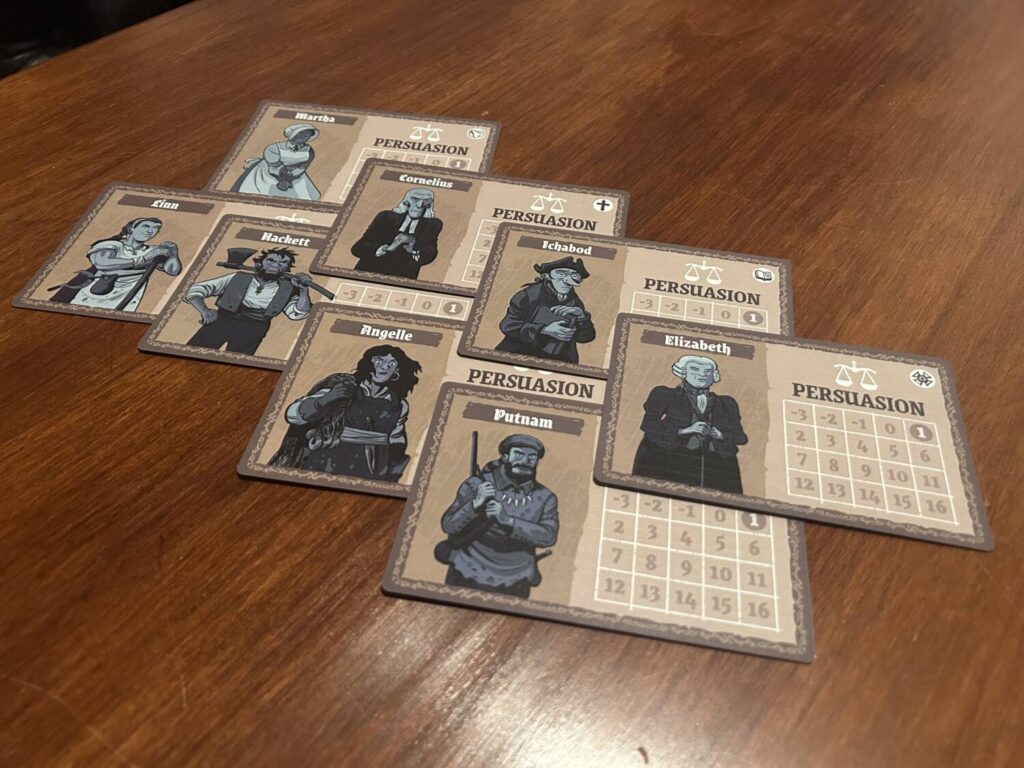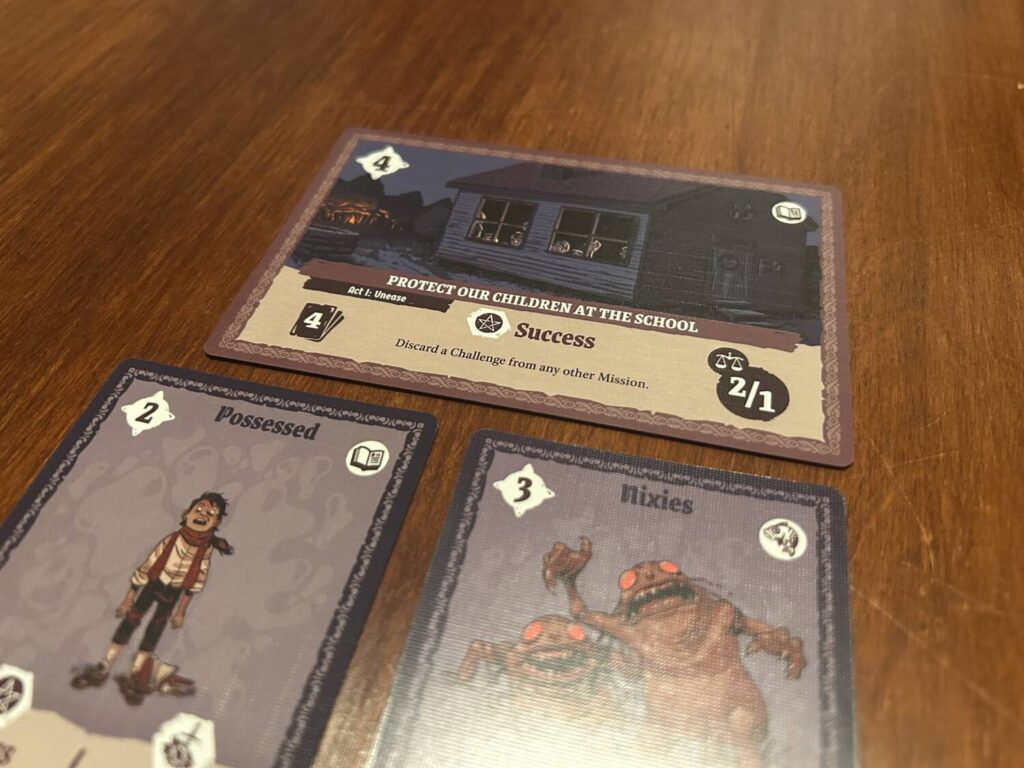Disclosure: Meeple Mountain received a free copy of this product in exchange for an honest, unbiased review. This review is not intended to be an endorsement.
For a modern audience, the witch trials that took place in the American colonies in the latter half of the 1600s seem to have hinged on the question of whether or not witches were real. The people who participated in them don’t seem to have much questioned that idea. Witches were real, alright. The question, as they saw it, was narrower: are there witches here?
Obviously, many people felt there were. Witchcraft!, a new solo game from designers David Thompson, Roger Tankersley, and Trevor Benjamin, joins the colonists in presupposing the existence of witches. They’re definitely here. No doubt about it, witchcraft is a-happening. Instead, the game asks, what if the witches were good?
As the witches of Wildegrens, yours is a solemn task. The town is under assault from black magics unknown. Demons walk the streets, lurk in the forests, and stalk the graveyard. Your coven is the only thing standing between the people of this colony and certain death. You’d think the populace would be grateful, but no. They suspect you of witchcraft—or, rather, of witchcraft!—and have brought you to trial. Your goal is to fend off the demons just long enough to prove to your fellow villagers that you mean them no harm, and to convince two of the three jurists of your innocence.

Witchcraft! follows in the footsteps of Resist!, which took place during the Spanish Civil War. If you played Resist!, you more or less know how to play Witchcraft! There are some rule changes, which mostly serve to streamline and simplify the playing experience, but the fundamental idea is the same. Draw a hand of five cards. Most of the cards are the witches in your coven, whom you play on your turn. All of your witches will be played, but you can choose to play each for either its hidden power or its revealed power. The hidden side is a less-powerful version of the character, but the card will go back into your deck for later. The revealed side uses a level of power that cannot be masked from the general public. Let a witch go off fully cocked and she heads to jail afterward.
Hidden or revealed, the witches contribute some combination of raw strength and a special ability. The abilities have a variety of effects. They can increase your total strength for the round, help with managing the Challenge cards that contribute to the difficulty of each Mission, deal with the Curses that inevitably clog up your deck, or help you recruit additional witches.
Then, it’s time to commit. You have to choose one of the three Missions out on the table. That moment of choosing is a source of much of the tension in Witchcraft! It is unlikely that you will know the full difficulty of any given Mission before committing to it, since most of the Challenge cards are face down until the moment you can’t turn back. Challenges are nasty li’l guys, demons who contribute additional strength and conditions to the mission.

Not only won’t you know exactly what you’re about to face, you also almost certainly aren’t going to have the strength necessary to handle all of the Challenge cards and the Mission. You have to choose which things to let slide. Many cards have bonuses for successful attempts, while others have penalties for letting them get by. You might gain a Curse, or allow a villager to die. None of it is good. Run out of curses and you lose. Allow five villagers to die and you lose. Fail two challenges and you lose.
At the end of each challenge, provided you succeed, you choose one of the three villagers on the table to persuade. Then you can decide if you want to go to trial. Victory comes if you go to trial and have adequately persuaded two out of the three jurists. Resist! could be punishingly difficult, and I worried that the addition of a new mechanic to Witchcraft! would be too much, but it works. Somehow, though still challenging, Witchcraft! feels a bit less absurdly swingy. The losses feel less aleatoric. The luck of the draw feels less punishing.
As a bonus, there’s more thematicism to Witchcraft! than initially meets the eye. My favorite touch, one I find strangely moving, is the choice to have the witches divided into different families, and to have those families synergize within themselves. If the whole of the Sullivan clan reveal themselves to the townspeople on a single turn, they unleash a remarkably powerful series of attacks. I admit I am a sap, but there’s a beauty in that.
Witchcraft! is tense, plays quickly, and is full of good tradeoffs. Artist Albert Monteys has once again turned in terrific work, full of evocative details and images. There are 8 possible jurors, each of which comes with their own unique set of Missions and Challenge cards, which means there’s enough variety here to keep a solo player well-occupied, and that’s before you crack open the scenario book. Witchcraft! casts one heck of a spell.













